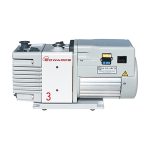
Vacuum Pump Cooling Skills
When the vacuum pump performs energy conversion, there is always a small part of the loss converted into heat. It must continuously radiate the heat through the motor casing and the surrounding medium. This process of dissipating heat is called cooling. The following editors will briefly discuss the heat dissipation of the vacuum pump. Cooling tips.
- Air cooling:
That is, the air sucked by the interstage or two-stage pump is compressed and transmitted through the combined silencer with comprehensive absorption and phase difference.
Second, the internal cooling of the rotor:
In order to make the vacuum pump work under a higher pressure difference, a more effective cooling method can be adopted, that is, the rotor is cooled with circulating oil. There are oil holes and oil diameter shaft heads at both ends of the shaft of the vacuum unit, and the other end is passed through the inner wall of the rotor. discharge.
Third, the oil film cooling of the rotor:
This cooling method is to connect an oil pipe at the inlet of the vacuum pump, and use the evenly dropped cooling oil to take away the heat of the rotor.
Fourth, cooling:
Vacuum pumps generate heat by conveying and compressing gas, and this heat must be transferred from the rotor to the housing to be dissipated.






